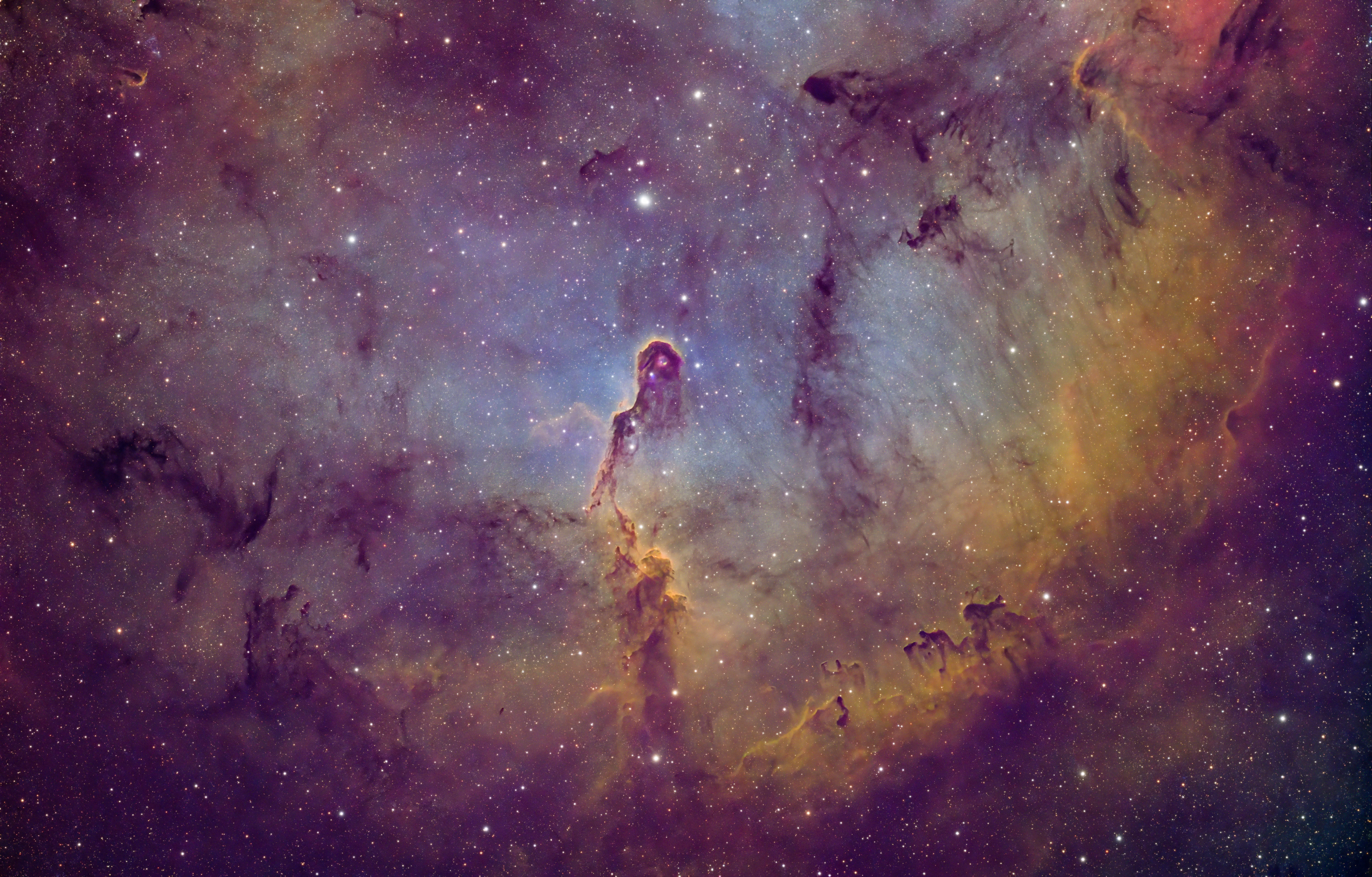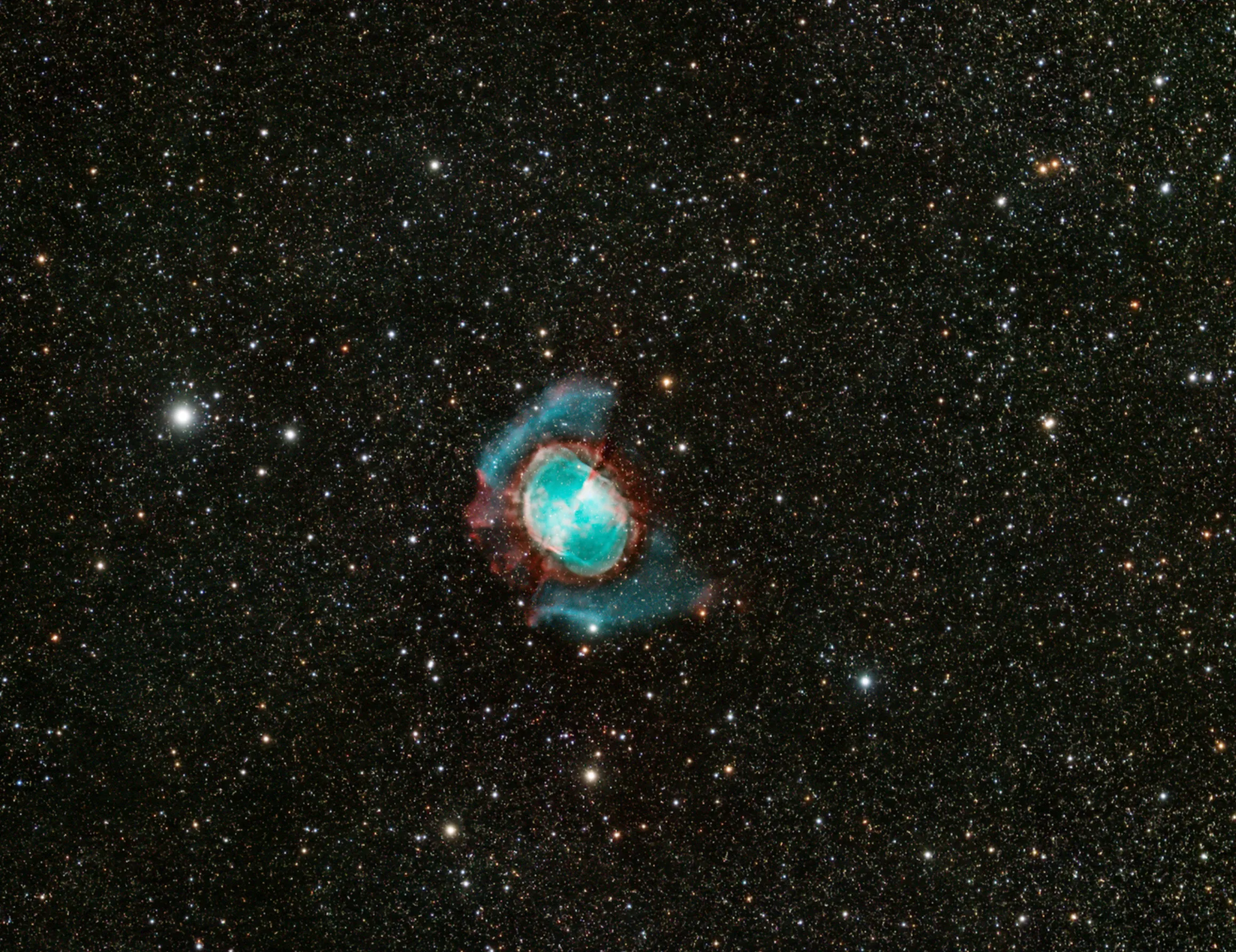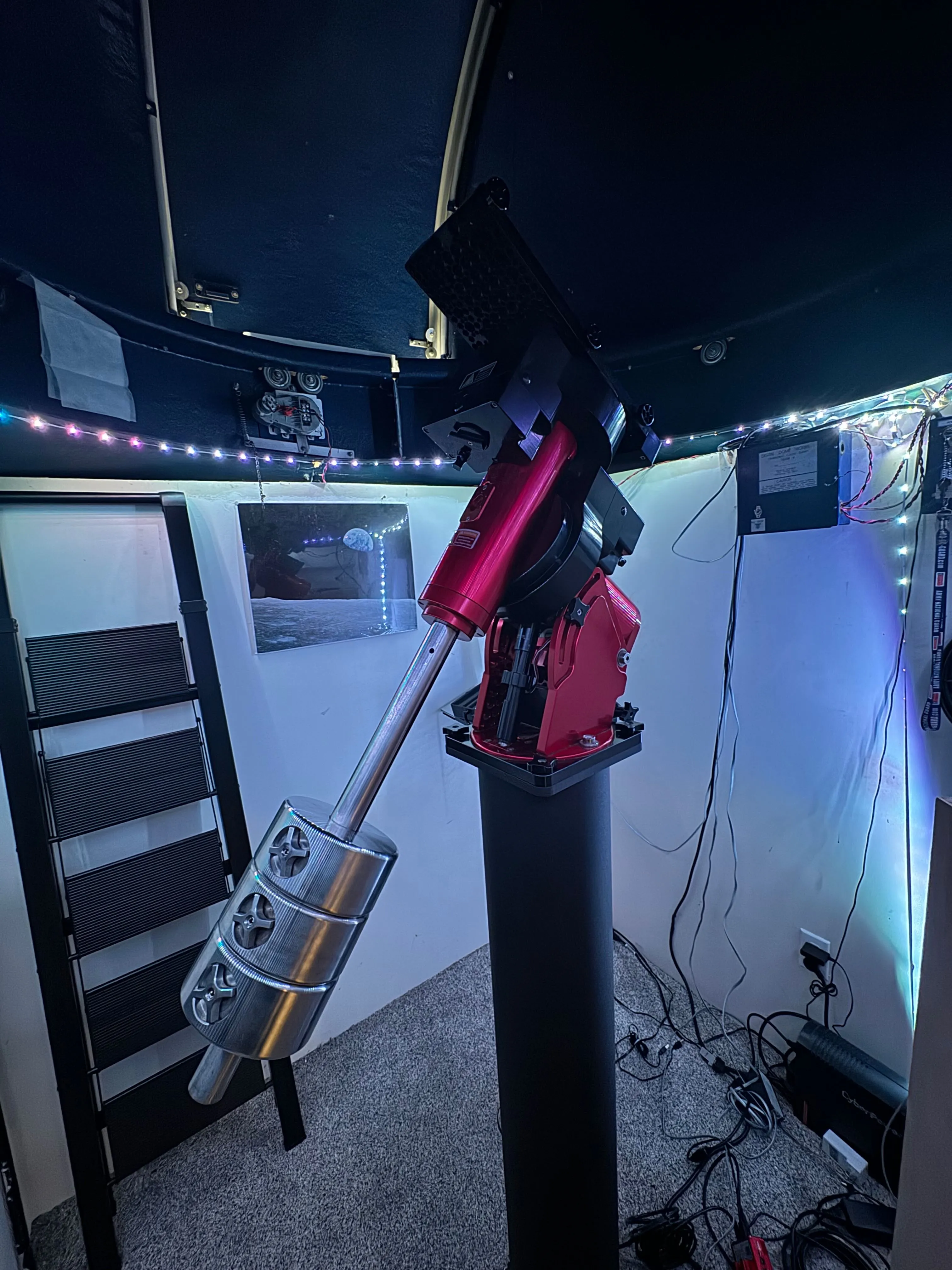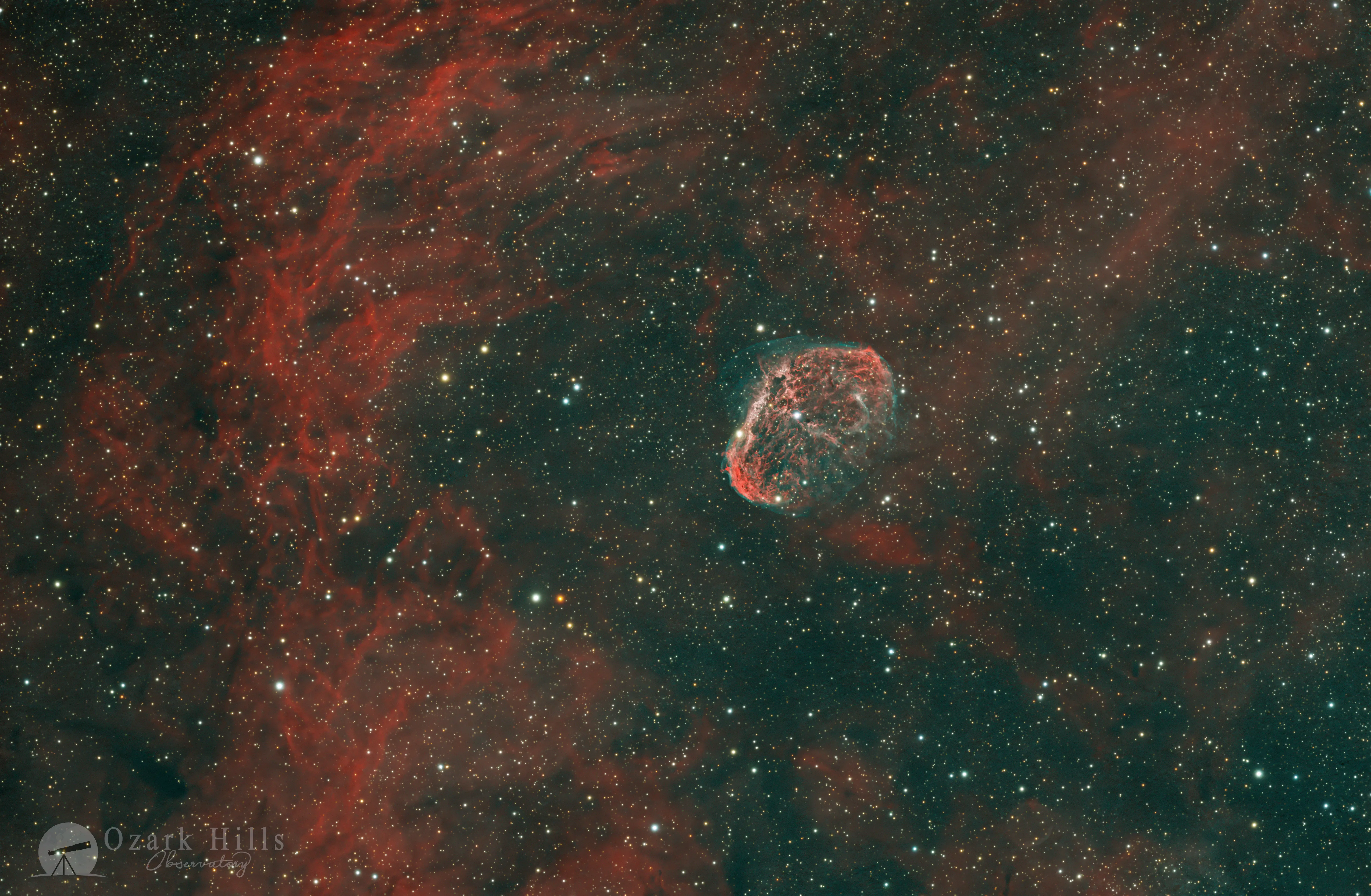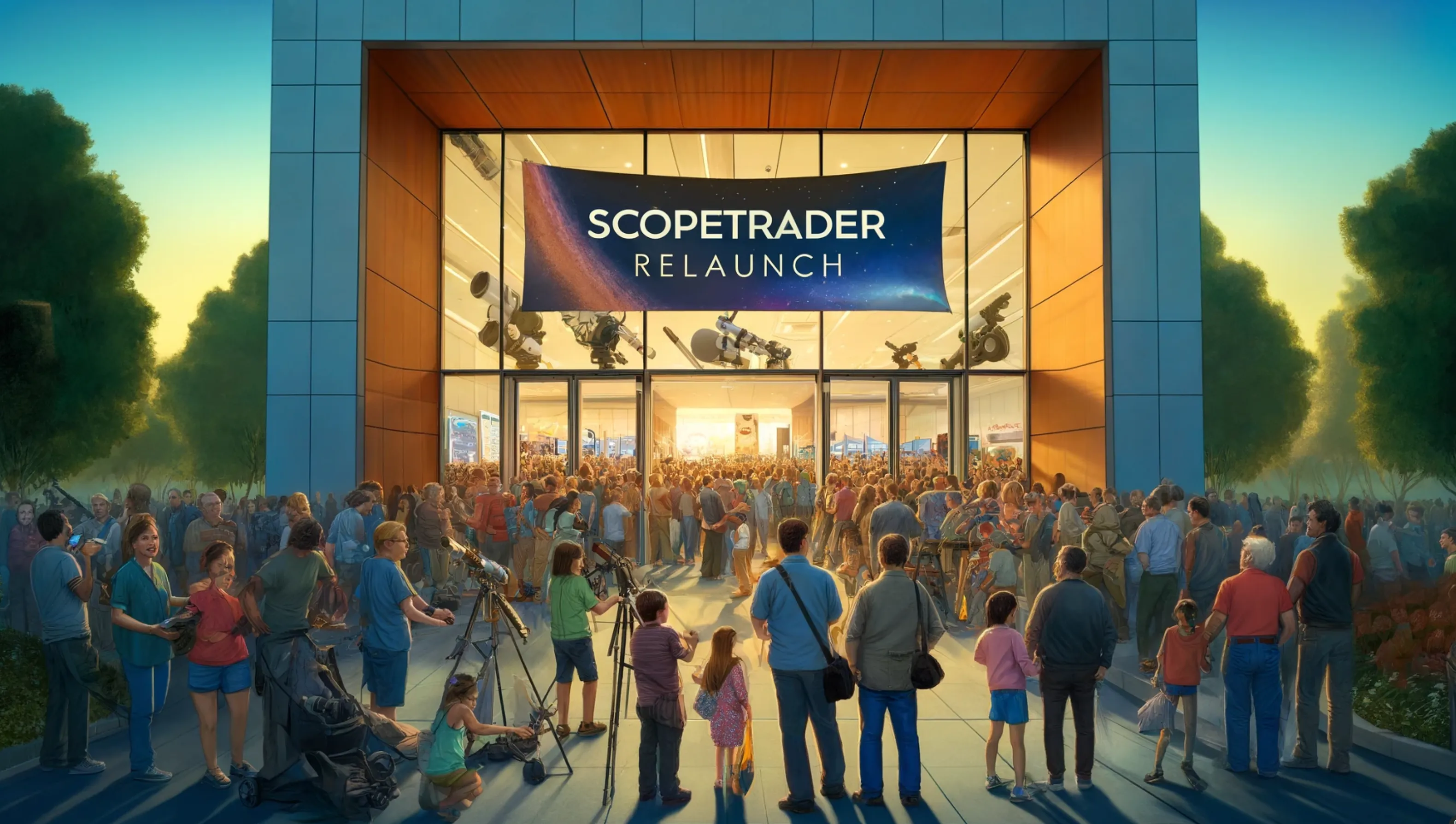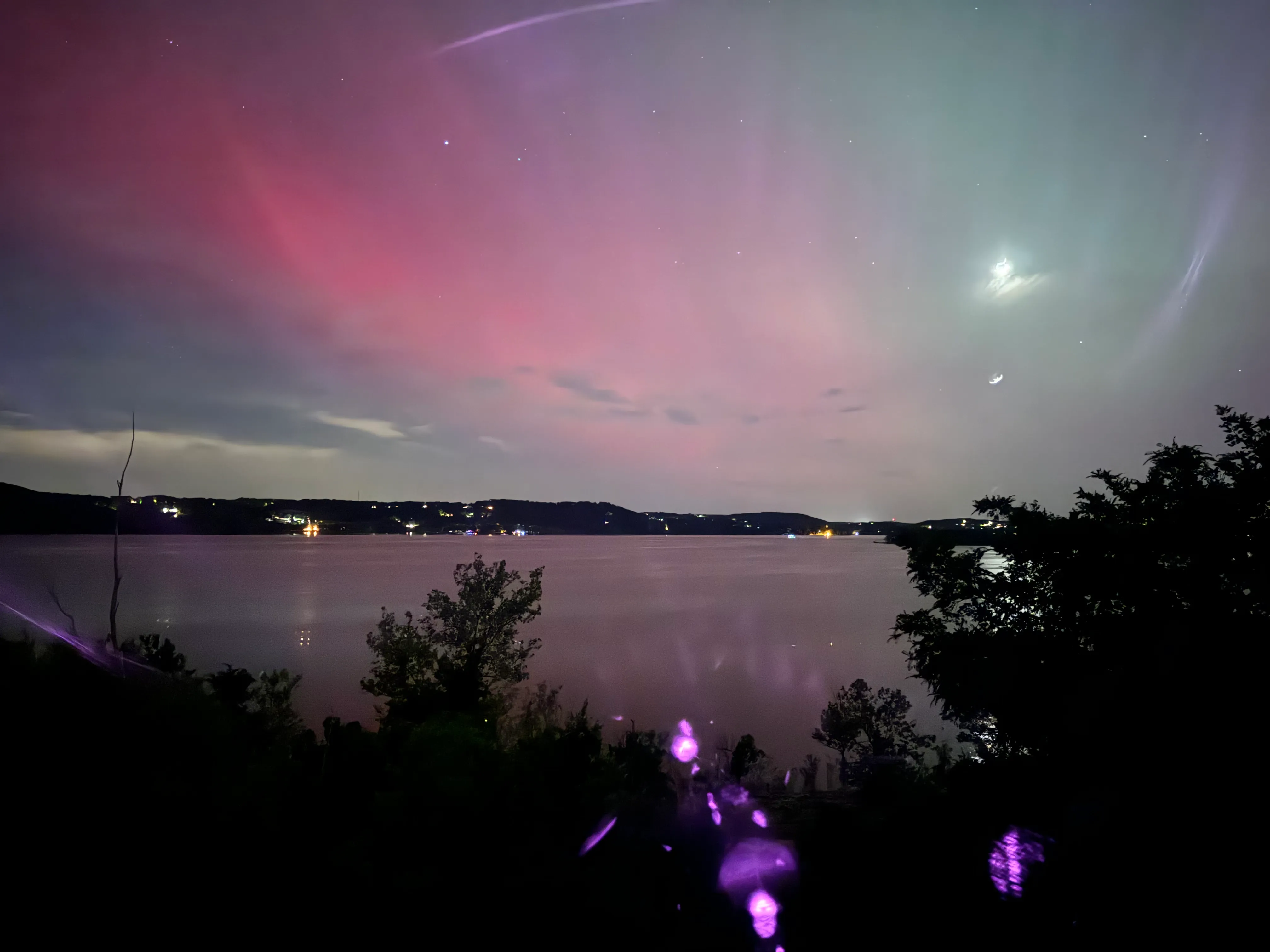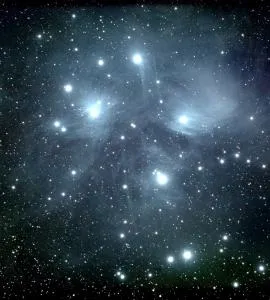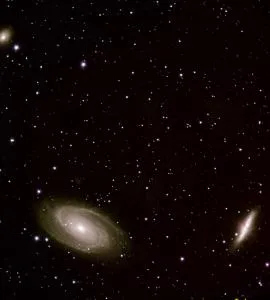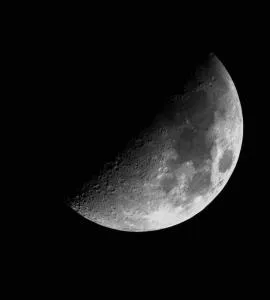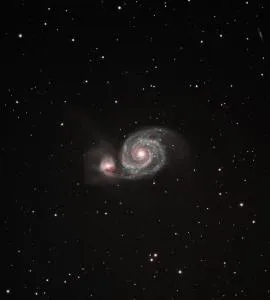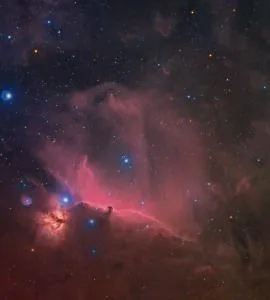Heart Nebula photographed in Hydrogen Alpha Oxygen III and Sulfer II filters
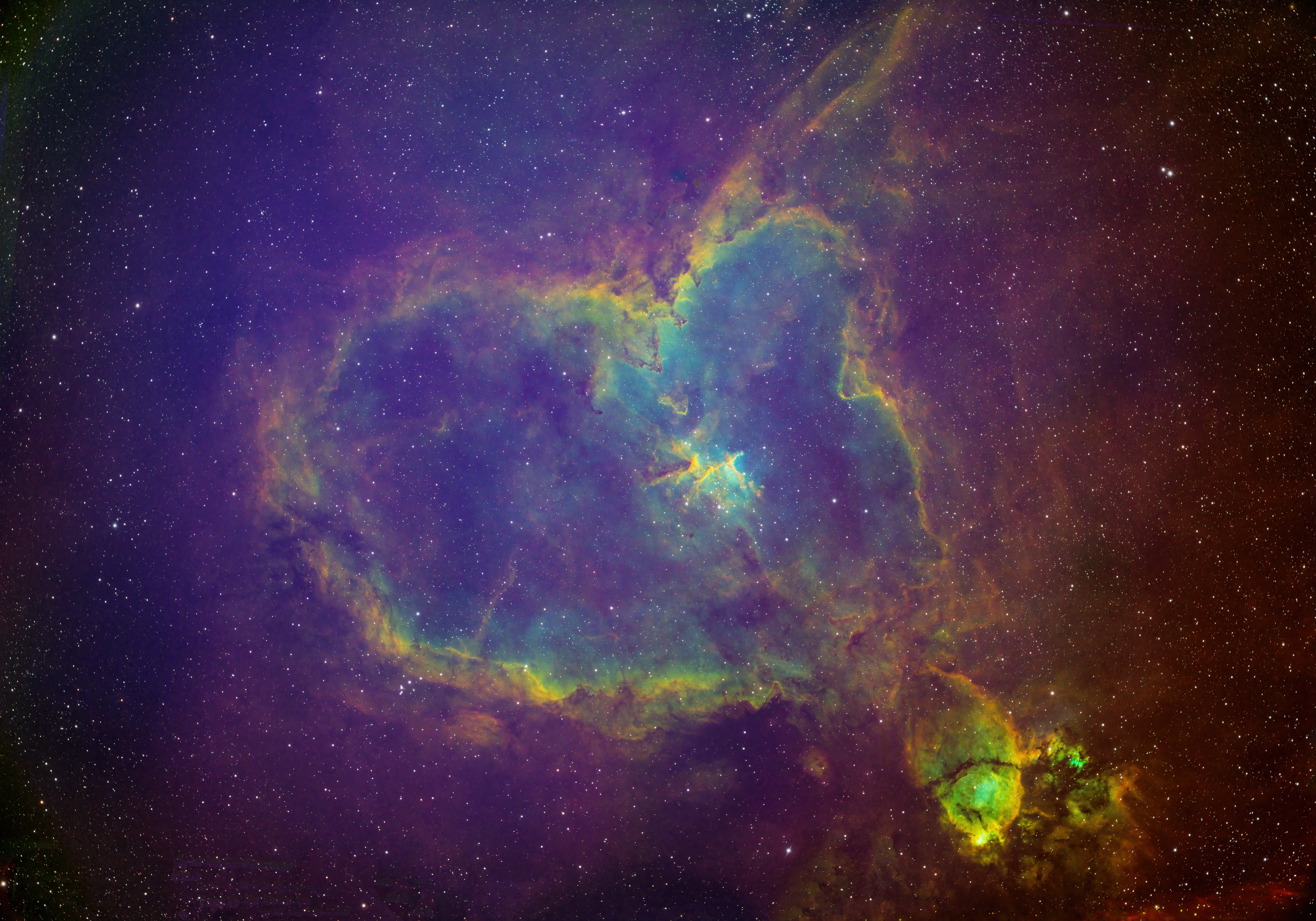
Heart Nebula astrophoto taken over two nights using the Askar FRA600 and ZWO 6200MM camera for a total of 14 hours combined image data in SHO+L
The Heart Nebula, also known as IC 1805, is an emission nebula located about 7,500 light-years away from Earth in the constellation Cassiopeia. It makes up part of the Perseus spiral arm of our Milky Way galaxy so it's local to us!
Like other emission nebulae, the Heart Nebula is made up of a mix of ionized gases, dust, and stellar material.
Here's a breakdown of The Heart Nebula components:
1. Ionized Gas: The predominant glowing gas in the Heart Nebula, and in most emission nebulae, is hydrogen. The pinkish-red glow that characterizes the Heart Nebula comes from the radiation emitted when electrons recombine with protons to form hydrogen atoms. This process is stimulated by the ultraviolet light from the young, hot stars within the nebula.
2. Dust: Nebulae contain vast amounts of dust particles mixed with the gas. This dust can both absorb and reflect light, creating intricate patterns and structures within the nebula. Sometimes, when this dust is backlit by the brighter emission regions, it can create dark areas known as "dust lanes" or "dark nebulae."
3. Stars: The Heart Nebula is home to a cluster of young, massive stars known as Melotte 15, which reside in the nebula's center. These stars are only a few million years old and are a significant source of the ultraviolet light that ionizes the surrounding gas. Their powerful stellar winds also help shape the nebula, carving out cavities and structures within the gas and dust.
4. Other Elements: Besides hydrogen, the Heart Nebula contains traces of other elements like helium, oxygen, sulfur, and more. Some of these elements can emit their own distinctive colors when ionized. For example, doubly-ionized oxygen can emit a characteristic blue-green hue, and ionized sulfur can give off a reddish light. These colors can sometimes be captured in images using specialized filters and contribute to the multi-colored appearance of some nebulae in astrophotographs.
In essence, the Heart Nebula is a vast, complex cloud of gas and dust illuminated and sculpted by the young stars within it. Its dynamic and vibrant appearance is a result of the interplay between these components and the energetic processes taking place within.
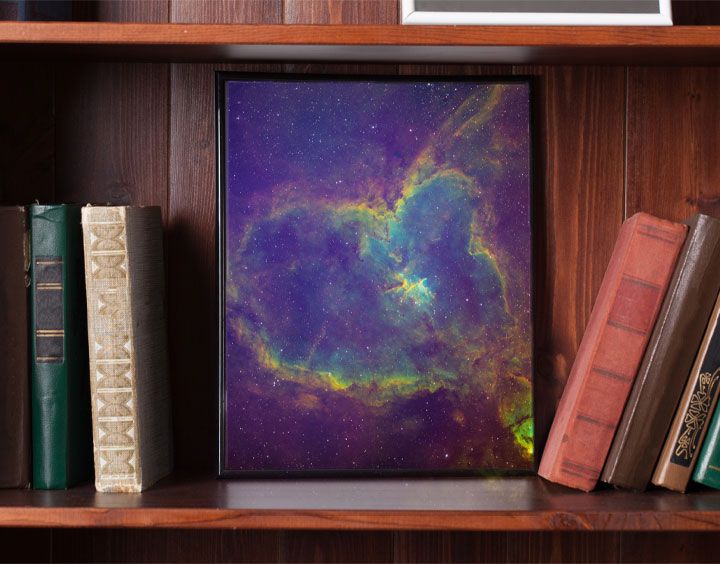
Equipment I used to photograph the Heart and Fish Nebula
Telescope: Askar FRA600 108mm f/5.6 Quintuplet Petzval Flat-Field Astrograph
Mount: AM5
Camera: ASI 6200MM with ASI filters
Guider: Williams Optics 50mm, ASI 120mm
Controller: ASI Air
Acquisition: SHO+L (12 hours total)
Sulfer II / bandpass of 7nm, passes light at 672nm: 32 - 300s subs (2.5 hours)
Hydrogen Alpha / bandpass of 7nm, passes light at 656nm: 22 - 300s subs (2 hours)
Oxogen III / bandpass of 7nm, passes light at 500nm: 61 - 300s subs (5 hours)
RGB combinded data for star color, 30 minutes each channel (1.5 hours)
Luminance: 12 - 300s subs (1 hour)
Darks/Flats/Bias: None
Processing: Pixinsight, Photoshop
Location: Missouri
Weather/Conditions: 70% Moon, clear low humidity
Bortle: 4
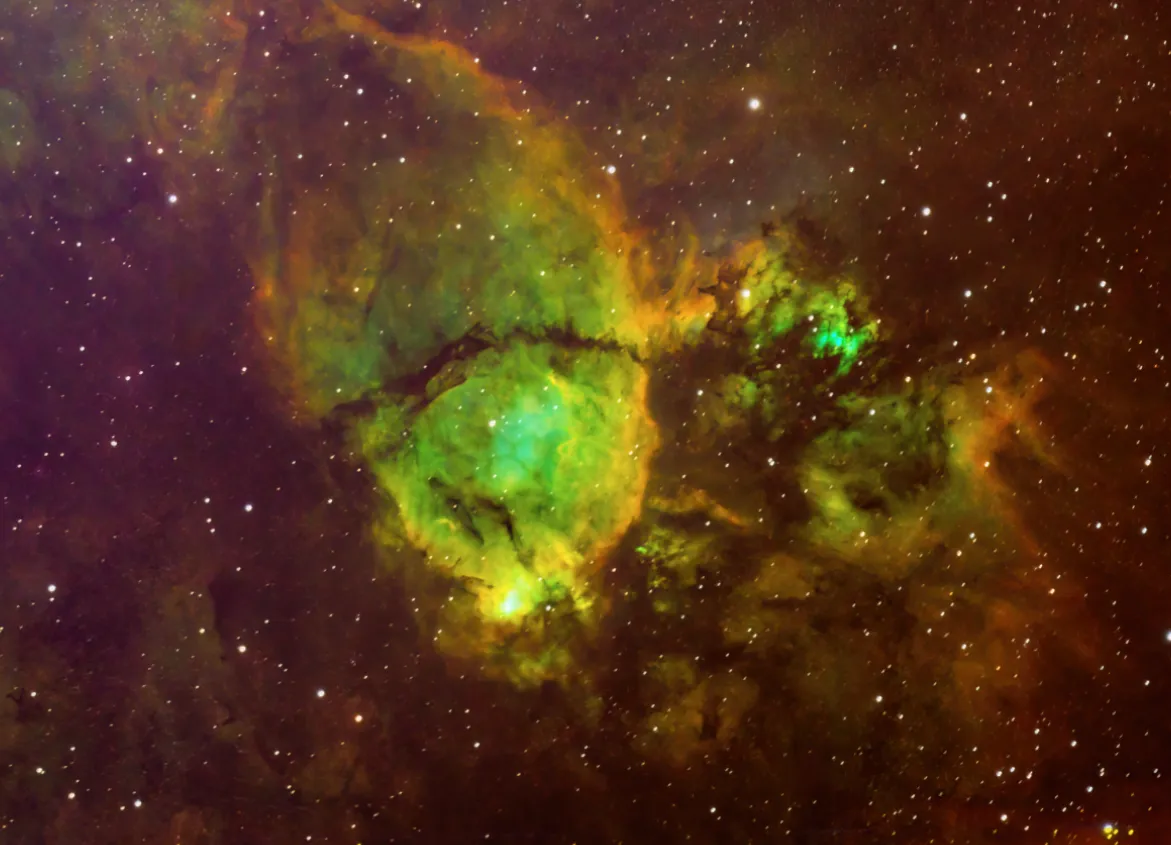
Trust in the Lord with all your heart and lean not on your own understanding; in all your ways submit to him, and he will make your paths straight. Proverbs 3:5-6
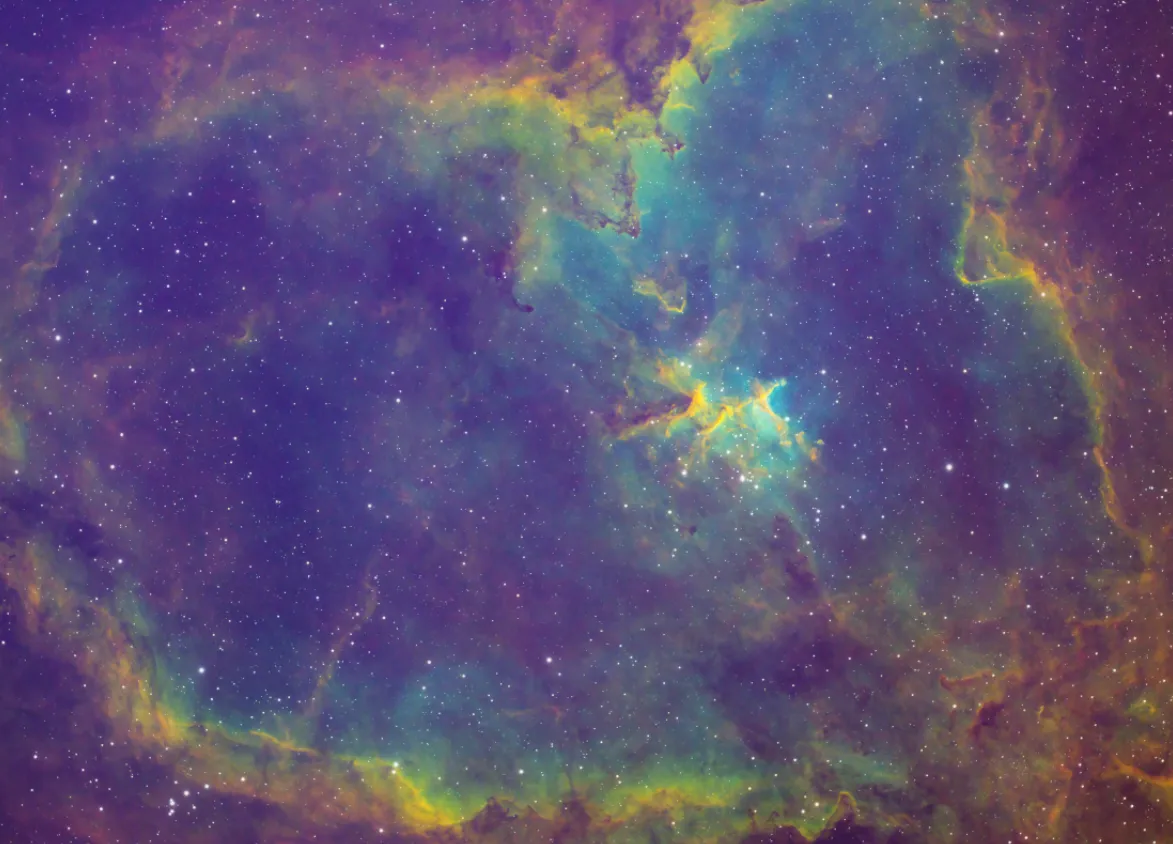
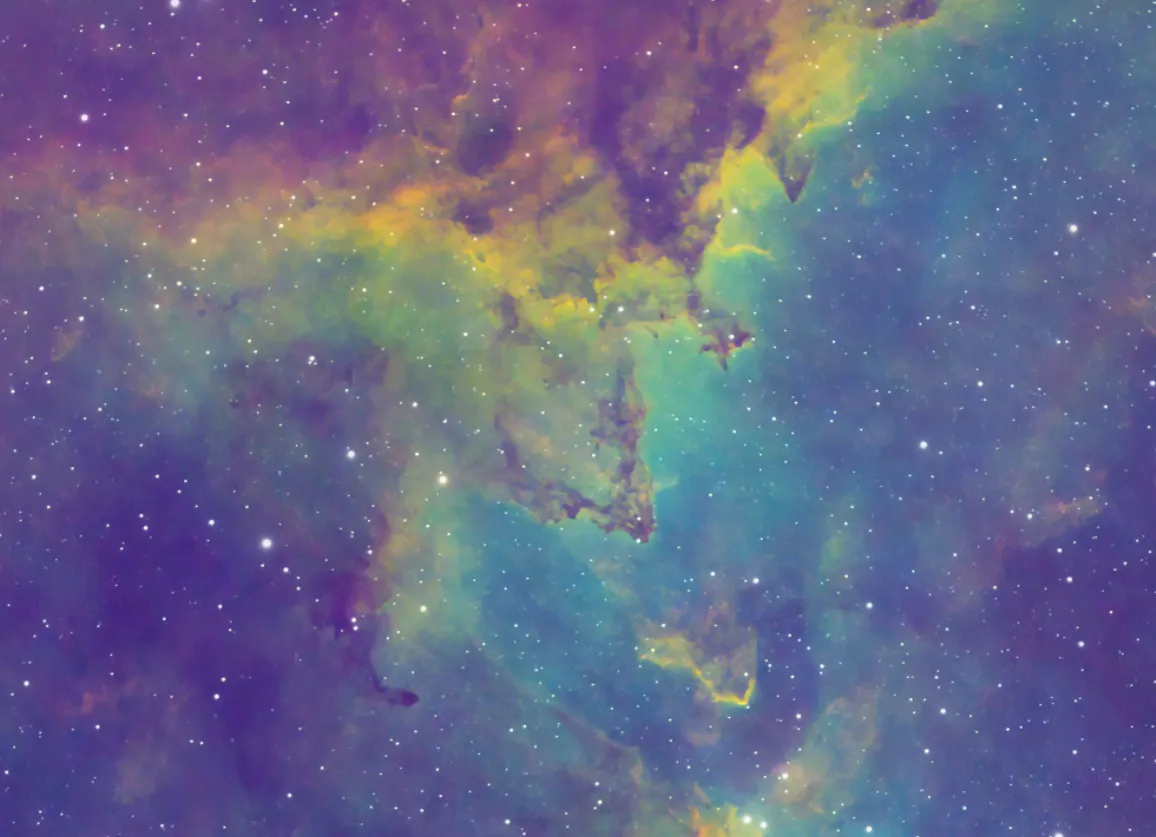
About the Author
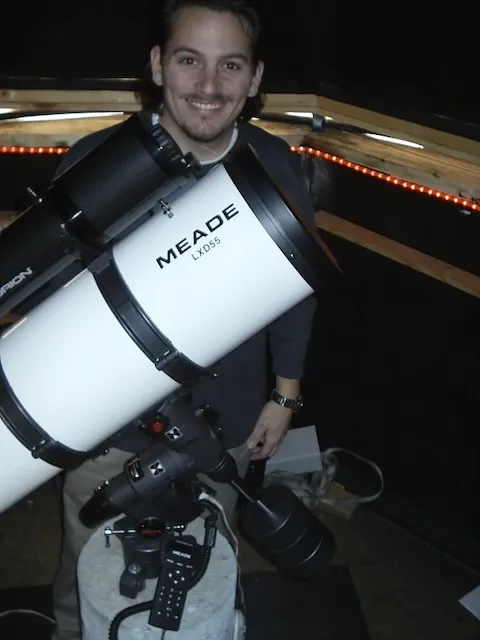
Meet Richard Harris, a passionate and dedicated astronomer who embarked on a cosmic journey at the age of 11 and has been reaching for the stars ever since. Born with an innate curiosity for the universe. Richard's fascination with astronomy ignited when he first gazed up at the night sky and felt an indescribable connection to the cosmos and creation. As a younger lad, Richard spent countless hours poring over astronomy books, studying constellations, and learning about the celestial wonders that grace our skies. In 2001, Richard invented the HyperTune telescope process, which has grown into the standard for German equatorial telescope mount tuning across the globe. He is also the founder of ScopeTrader, a global resource helping to grow the hobby of astronomy which started in 2002, and the CEO of Moonbeam software company, started in 2008. When he's not taking photos of our universe, you can find him with family, playing guitar, or traveling.
